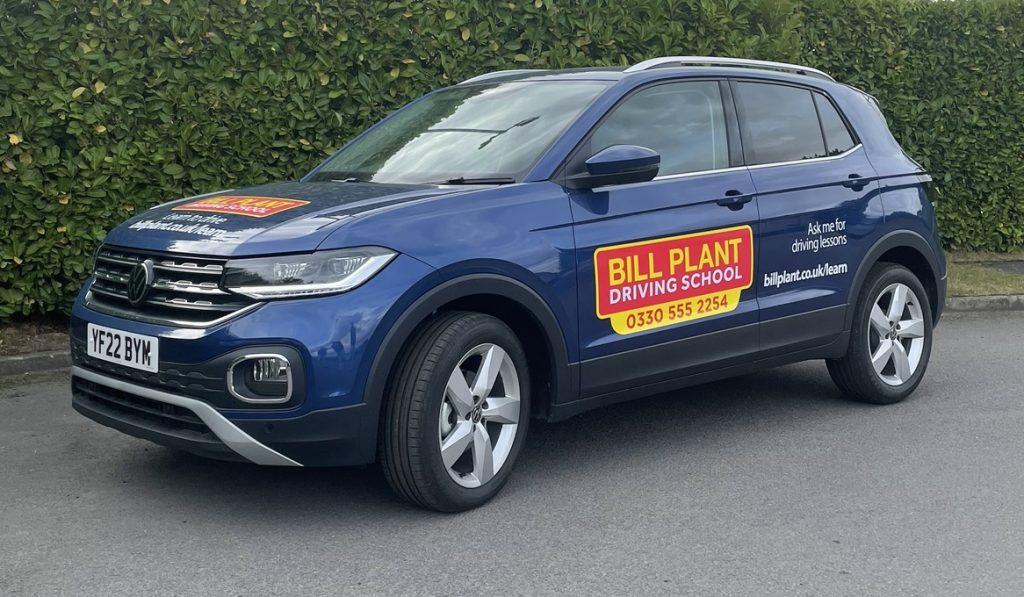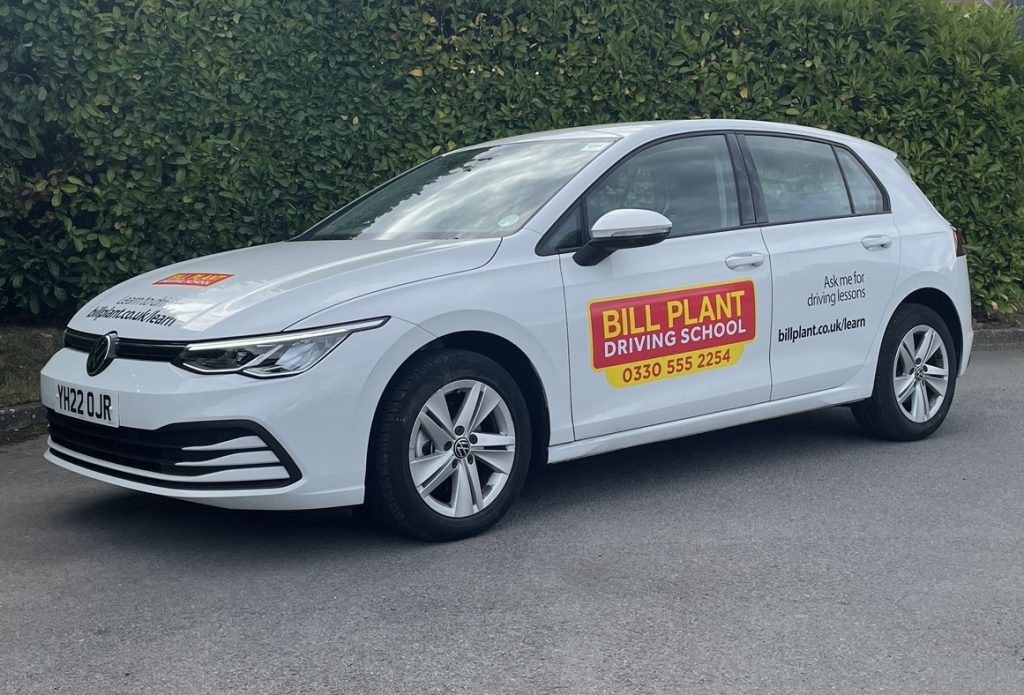Structuring your driving lessons
If you’re a potential driving instructor, a recently-qualified instructor, or simply looking for extra guidance or inspiration, Bill Plant Driving School is around to ensure you have all the support you need when shaping and structuring your lessons.
When it comes to learning how to drive, there’s a lot that your students need to consider. From specific manoeuvres and checking mirrors to learning about how your car operates and the rules of the road, building a structure for your lessons can help deliver all the necessary information for your student.
So, how should you structure a driving lesson?
Preparation
Before you and your student set off on the road, you should follow through with some necessary preparation. For new students, you must check that they hold a valid provisional driving licence and pass the eye-sight test. It is also good practice to get an understanding of their progress in relation to the theory and hazard perception test, and offer suitable guidance depending on their current level of ability.
Once this has taken place, to ensure your students perform at their best, they need to feel calm, comfortable and ready. If you were driving the car beforehand, your student might need to readjust the seat so they can reach the pedals and tweak the mirrors to have the perfect view.
Once your student has gotten comfortable, discuss and agree the lesson objectives with them and what your student will be expected to do. This will reduce the anxiety and nerves that your student may be feeling since now they know what they’ll be asked to do. For example, you might begin with “this lesson, we’ll be focusing on roundabouts, so I will take you to these three roundabouts before taking the straight road home”.
After this, your student will need to begin driving off.
If this is the first lesson, you will need to guide them through the necessary procedures, i.e. clutch down, engine on, first gear, handbrake and accelerate, along with any other specific information they’ll need for driving your car. Before moving off, ensure your student looks both ways and checks for oncoming traffic. This is a crucial element in driving tests and is a common reason why people fail.
After a few lessons, your student should begin to get the hang of driving off without you having to point out what to do – but each student will work at their own pace.
You can think about how you’ll want to end each lesson as well. It’s a good idea to park up five or ten minutes before the end of your allocated time – this will give your student a chance to ask questions or to recap any scenarios they encountered on the roads.
Starting your first driving lessons
For the first few lessons with a new driver, you should concentrate on the driving fundamentals like changing gears, driving to speed limits and approaching junctions.
Doing this in a quiet and easy area for driving is a great way to boost your student’s confidence; after all, confidence is key to becoming a great driver. Many new drivers will be nervous about getting behind the wheel, so building up their confidence early on is incredibly important.
Depending on your area, it might be worth finding somewhere that has less traffic or has long simple roads. Driving around small, congested areas with lots of possible hazards might be too intimidating at first.
Once you feel like your student is capable of driving around more complex roads, then you can begin to structure your lessons in the following ways:
Cover the core driving lesson course material
Now your student has grasped the driving basics, you can now start introducing more into your lessons.
Although driving test routes are no longer published, you and other driving instructors in your area are likely to have a firm knowledge of roads and junctions that are visited regularly on driving tests. It’s worth introducing these routes to your students throughout their lessons, as it can help to take the fear factor away from certain areas. Not only will this help your student gain valuable practice on different roads, but it’s also helpful, confidence-building revision for the practical test.
These routes may include:
- Roundabouts
- Junctions
- Narrow streets
- Traffic lights
- Zebra crossing
- Lanes
- Speed limits
- Pedestrians
- Road bumps and roadworks
After a few lessons where your student is learning the rules of the road in different areas, you should include at least one of the following manoeuvres:
- 3-point turn
- Parking: parallel parking, reverse parking
- Reversing
- Emergency stop
- Bay park
- Pulling over
- Hill start
End each lesson by reviewing the areas your student did well in and what you will focus on improving in the next lesson. Structuring your lessons this way allows room for change. If, for example, you think your student is very good at parallel parking, try to alter your lessons to focus on the manoeuvres they’re not so good at.
Getting your students ready for a driving test
After a few lessons, and once you believe your student is ready, you should alter your lesson plan to prepare for their driving test.
Every student is different and some may take longer than others to get the hang of things but once you know they are ready, you can start asking them questions that are likely to come up at the beginning of their test. There should be a list of ‘show me, tell me’ questions where your student will need to point out elements of the car and tell the examiner what it does.
This could be indicators, hazard warning signs, or even asking your student to lift the bonnet and explain parts of the engine. A lot of these questions should be fairly straightforward if your student has been driving for a while since they will have likely had to use some of them, so you should focus on the questions that your student is less familiar with.
What makes a good driving lesson?
No two students will be the same, so it’s important for you to remain patient and understand your students’ individual learning styles. A lot of students say it’s the instructor who either makes or breaks the driving lessons – so think about how you can make your instruction clear, patient, and, ultimately, fun!
A good driving lesson should target your student’s weaknesses with compassion and encouragement so they can improve and feel excited about their growth as a driver.
Having a structure with clear lesson objectives can serve as a great driving lesson, as it gives your student a focus and allows you to track their progress.
Extra support as a Bill Plant Driving School franchisee
If you complete your driving instructor training with us, you are automatically eligible to become part of the Bill Plant Driving School Franchise. Alongside receiving great benefits such as your own car and full flexibility with your lesson diary, you’ll also receive a complimentary Lesson Plans & Diagrams which cover all of the core topics involved in delivering driving lessons.
With Facebook pages and local networks of Bill Plant Driving School instructors, you’ll always feel supported. If you’re ever unsure about anything or want someone to glance over your driving lesson plans, there are plenty of friendly faces out there to help within our amazing community of driving instructors.
Being a part of the franchise also gives you access to 20 hours of free training at Part 3, your own car, complete flexibility with your diary and low-cost CPD courses, including ORDIT, since Bill Plant Driving School is a DVSA, ORDIT-registered training organisation. Not only will this help your confidence come on leaps and bounds, but it could also increase your earning potential as a driving instructor.
FAQs
How do you structure a driving lesson?
Divide your driving lesson into three parts, just as a teacher would with a school lesson. Have an introduction to the lesson and what your student will learn, followed by the main driving section. Leave time at the end of the lesson to review what your student has learnt, and give them time to ask questions.
It’s also a good idea to focus each lesson around one or two key skills, so you don’t overwhelm your students. This could be driving on a motorway, dual carriageway or use of roundabouts, or it could centre around specific manoeuvres.
How long should a driving lesson be?
Driving instructors usually have lessons that last two hours. This should easily give you enough time to drive to and from your location and deliver sufficient practical driving tuition.
If, however, you feel your student needs shorter lessons, discuss with them the possible option of changing the time to 90 minutes.
How many driving lessons should I have in a day?
There is no limit to the number of driving lessons you can take per day as a driving instructor, particularly if you are self-employed. To make sure you’re not overloading yourself and are able to give your students the attention they deserve, you might wish to have around three to four two-hour long lessons per day.
What time of day is best to do a driving lesson?
There is no “best” time of day to have a driving lesson. Ideally, you would want your students to get practice at different times of day, to help them experience driving in the dark or around a busy school, for example.
If you’re taking someone on their first driving lesson, you might want to pick a time of day that you know isn’t too busy in your area. This could be between 11am and 1pm, for example, which is usually when people are at work or school. The summer months are also a great time period for learners since the longer days allow for evening and early morning lessons.

